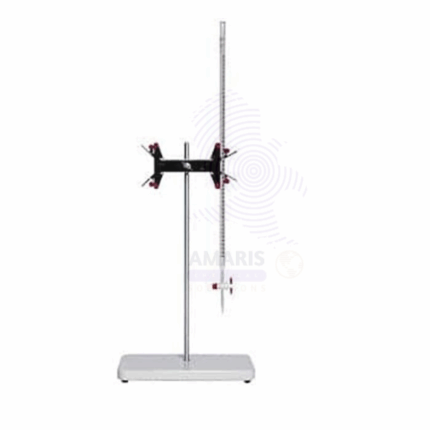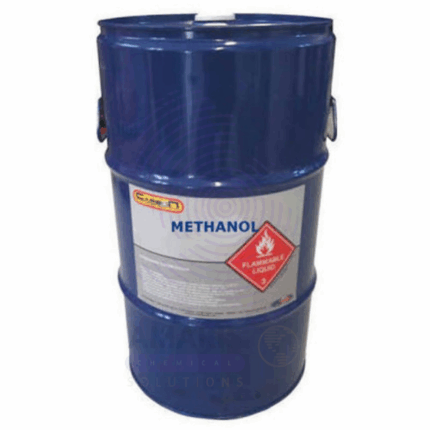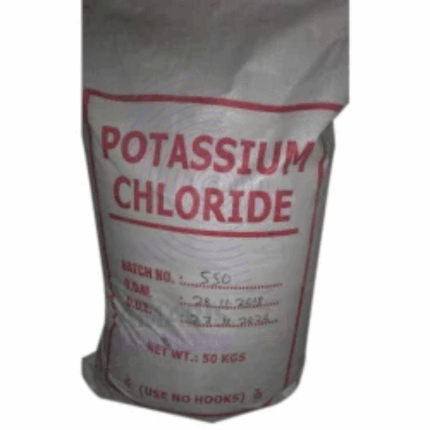Timolol Maleate BP
Timolol Maleate BP is the British Pharmacopoeia-grade salt form of Timolol, a non-selective beta-adrenergic receptor blocker. It is primarily used in ophthalmic and systemic formulations to manage elevated intraocular pressure and cardiovascular conditions. As a pharmaceutical active ingredient, it is recognized for its potency, stability, and wide applicability in glaucoma treatment, hypertension, and migraine prophylaxis. The maleate salt improves solubility and stability for formulation in eye drops and tablets.
Primary Uses
Pharmaceutical Industry
Ophthalmic Solutions:
Glaucoma Treatment: Reduces intraocular pressure by decreasing aqueous humor production in the eye.
Ocular Hypertension: Used in managing elevated intraocular pressure in patients without glaucoma.
Chronic Open-Angle Glaucoma: Widely used in first-line and adjunct therapy to prevent optic nerve damage.
Cardiovascular Medications:
Hypertension Management: Systemic formulations used to lower blood pressure by reducing cardiac output.
Arrhythmias: Helps control heart rate in certain cardiac arrhythmias such as atrial fibrillation.
Angina Pectoris: Reduces myocardial oxygen demand by decreasing heart rate and contractility.
Post-Myocardial Infarction: Used to improve survival and reduce the risk of further cardiac events.
Neurological Uses:
Migraine Prophylaxis: Effective in preventing vascular headaches through beta-blockade of cerebral vessels.
Secondary Uses
Veterinary Medicine
Glaucoma in Pets: Used off-label in veterinary ophthalmology to treat glaucoma in dogs and cats.
Combination Therapies
Fixed-Dose Combinations: Frequently combined with other agents (e.g., dorzolamide, brimonidine) for enhanced efficacy in ocular hypertension and glaucoma.
Research & Development
Pharmacodynamic and Pharmacokinetic Studies: Used in laboratory research on beta-blockers, receptor selectivity, and ophthalmic drug delivery.
Basic Identification Attributes
Chemical Name (IUPAC): (S)-1-[(1,1-dimethylethyl)amino]-3-[(4-morpholinyl)-1,2,5-thiadiazol-3-yl]propan-2-ol maleate
Common/Trade Name: Timolol Maleate BP
CAS Number: 26921-17-5
HS Code: 3004.90.00 (Finished form), or 2933.39.90 (API/intermediate)
Synonyms: Timolol hydrogen maleate, Timoptic (as brand name), Blocadren (oral form)
Physical & Chemical Properties
Physical State: Crystalline powder
Color & Odor: White to off-white; odorless
Melting Point: Approx. 200–205 °C
Solubility: Freely soluble in water and alcohol
Molecular Formula: C₁₃H₂₄N₄O₃S·C₄H₄O₄
Molecular Weight: 432.50 g/mol
pH (1% solution): Typically around 5.5–7.5
Safety & Hazard Attributes
GHS Classification: Not classified as hazardous under standard pharmaceutical handling
Toxicity: Low to moderate systemic toxicity; use strictly under medical supervision
LD50: Approx. 1050 mg/kg (oral, rat)
Exposure Limits: Handle in accordance with pharmaceutical safety protocols; occupational exposure limits may apply in manufacturing settings
Storage & Handling Attributes
Storage Conditions: Store in a tightly closed container, in a dry and cool place, protected from light
Container Type: Double-lined fiber drums or HDPE containers for API; sterile bottles for finished products
Shelf Life: Typically 36 months when stored under recommended conditions
Handling Precautions: Avoid dust generation; wear protective gear in manufacturing environments
Regulatory & Compliance Attributes
Complies with British Pharmacopoeia (BP) specifications
Also meets or aligns with USP, EP, and JP standards depending on manufacturer
Listed on WHO Essential Medicines List (as Timolol eye drops for glaucoma)
Manufactured under GMP, ICH Q7, and FDA guidelines
Registered under REACH (if imported into the EU for manufacturing)
Subject to Controlled Substance Monitoring in some countries due to cardiovascular action
Environmental & Health Impact
Biodegradability: Moderate; pharmaceutical compounds may persist in aquatic environments
Ecotoxicity: Can affect aquatic organisms at very low concentrations; must be properly disposed
Bioaccumulation: Not expected to significantly bioaccumulate
Disposal: Should be incinerated or disposed of per pharmaceutical waste guidelines
PPE Required: Gloves, lab coat, dust mask or respirator in manufacturing areas
Handling Guidelines: Avoid inhalation and direct contact with skin or eyes
Storage Measures: Store under controlled conditions; segregate from incompatible substances
First Aid Measures
Inhalation: Move to fresh air; seek medical attention if symptoms occur
Skin Contact: Wash with plenty of soap and water
Eye Contact: Rinse thoroughly with water; consult a physician if irritation persists
Ingestion: Do not induce vomiting; seek immediate medical attention
Firefighting Measures
Fire Hazards: Not highly flammable; may burn at high temperatures
Extinguishing Media: Water spray, foam, CO₂, dry chemical
Hazardous Combustion Products: Carbon oxides, nitrogen oxides, and sulfur compounds


 Preservatives(food)
Preservatives(food) Flavor Enhancers
Flavor Enhancers Acidulants
Acidulants Sweeteners
Sweeteners Antioxidants
Antioxidants Colorants(food)
Colorants(food) Nutraceutical Ingredients (food)
Nutraceutical Ingredients (food) Nutrient Supplements
Nutrient Supplements Emulsifiers
Emulsifiers
 Collectors
Collectors Dust Suppressants
Dust Suppressants Explosives and Blasting Agents
Explosives and Blasting Agents Flocculants and Coagulants
Flocculants and Coagulants Frothers
Frothers Leaching Agents
Leaching Agents pH Modifiers
pH Modifiers Precious Metal Extraction Agents
Precious Metal Extraction Agents
 Antioxidants(plastic)
Antioxidants(plastic) Colorants (Pigments, Dyes)
Colorants (Pigments, Dyes) Fillers and Reinforcements
Fillers and Reinforcements Flame Retardants
Flame Retardants Monomers
Monomers Plasticizers
Plasticizers Polymerization Initiators
Polymerization Initiators Stabilizers (UV, Heat)
Stabilizers (UV, Heat)
 Antifoaming Agents
Antifoaming Agents Chelating Agents
Chelating Agents Coagulants and Flocculants
Coagulants and Flocculants Corrosion Inhibitors
Corrosion Inhibitors Disinfectants and Biocides
Disinfectants and Biocides Oxidizing Agents
Oxidizing Agents pH Adjusters
pH Adjusters Scale Inhibitors( water)
Scale Inhibitors( water)
 Antioxidants(cosmetic)
Antioxidants(cosmetic) Emollients
Emollients Fragrances and Essential Oils
Fragrances and Essential Oils Humectants
Humectants Preservatives
Preservatives Surfactants(cosmetic)
Surfactants(cosmetic) Thickeners
Thickeners UV Filters
UV Filters
 Fertilizers
Fertilizers Soil Conditioners
Soil Conditioners Plant Growth Regulators
Plant Growth Regulators Animal Feed Additives
Animal Feed Additives Biostimulants
Biostimulants Pesticides (Herbicides, Insecticides, Fungicides)
Pesticides (Herbicides, Insecticides, Fungicides)
 Active Pharmaceutical Ingredients (APIs)
Active Pharmaceutical Ingredients (APIs) Excipients
Excipients Solvents(pharmaceutical)
Solvents(pharmaceutical) Antibiotics
Antibiotics Antiseptics and Disinfectants
Antiseptics and Disinfectants Vaccine Adjuvants
Vaccine Adjuvants Nutraceutical Ingredients (pharmaceutical)
Nutraceutical Ingredients (pharmaceutical) Analgesics & Antipyretics
Analgesics & Antipyretics
 Analytical Reagents
Analytical Reagents Solvents(lab)
Solvents(lab) Chromatography Chemicals
Chromatography Chemicals Spectroscopy Reagents
Spectroscopy Reagents microbiology-and-cell-culture-reagents
microbiology-and-cell-culture-reagents Molecular Biology Reagents
Molecular Biology Reagents Biochemical Reagents
Biochemical Reagents Inorganic and Organic Standards
Inorganic and Organic Standards Laboratory Safety Chemicals
Laboratory Safety Chemicals Specialty Laboratory Chemicals(Special Laboratory Equipment)
Specialty Laboratory Chemicals(Special Laboratory Equipment)
 Demulsifiers
Demulsifiers Hydraulic Fracturing Fluids
Hydraulic Fracturing Fluids Scale Inhibitors(oil)
Scale Inhibitors(oil) Surfactants(oil)
Surfactants(oil) Drilling Fluids
Drilling Fluids
 Dyes and Pigments
Dyes and Pigments Bleaching Agents
Bleaching Agents Softening Agents
Softening Agents Finishing Agents
Finishing Agents Antistatic Agents
Antistatic Agents
 Admixtures
Admixtures Waterproofing Agents
Waterproofing Agents Sealants and Adhesives
Sealants and Adhesives Curing Compounds
Curing Compounds Concrete Repair Chemicals
Concrete Repair Chemicals Anti-Corrosion Coatings
Anti-Corrosion Coatings
 Surfactants(cleaning)
Surfactants(cleaning) Builders
Builders Enzymes
Enzymes Solvents (Cleaning)
Solvents (Cleaning) Fragrances
Fragrances
 Electronic Chemicals
Electronic Chemicals Catalysts
Catalysts Lubricants
Lubricants Photographic Chemicals
Photographic Chemicals Refrigerants
Refrigerants Automotive chemicals
Automotive chemicals Pyrotechnic Chemicals
Pyrotechnic Chemicals
 Biodegradable Surfactants
Biodegradable Surfactants Bio-based Solvents
Bio-based Solvents Renewable Polymers
Renewable Polymers Carbon Capture Chemicals
Carbon Capture Chemicals Wastewater Treatment Chemicals
Wastewater Treatment Chemicals
 Pigments
Pigments Solvents(paint)
Solvents(paint) Specialty Coatings
Specialty Coatings Binders/Resins
Binders/Resins Additives
Additives Driers
Driers Anti-Corrosion Agents
Anti-Corrosion Agents Functional Coatings
Functional Coatings Application-Specific Coatings
Application-Specific Coatings
 Fresh Herbs
Fresh Herbs Ground Spices
Ground Spices Whole Spices
Whole Spices Spice Blends
Spice Blends Dried Herbs
Dried Herbs
 Leavening Agents
Leavening Agents Dough Conditioners
Dough Conditioners Flour Treatments
Flour Treatments Fat Replacers
Fat Replacers Decoratives
Decoratives Preservatives(baking)
Preservatives(baking)
 Plasticizers & Softeners
Plasticizers & Softeners Reinforcing Agents
Reinforcing Agents Adhesion Promoters
Adhesion Promoters Vulcanizing Agents
Vulcanizing Agents Antidegradants
Antidegradants Blowing Agents
Blowing Agents Fillers & Extenders
Fillers & Extenders Accelerators & Retarders
Accelerators & Retarders






















